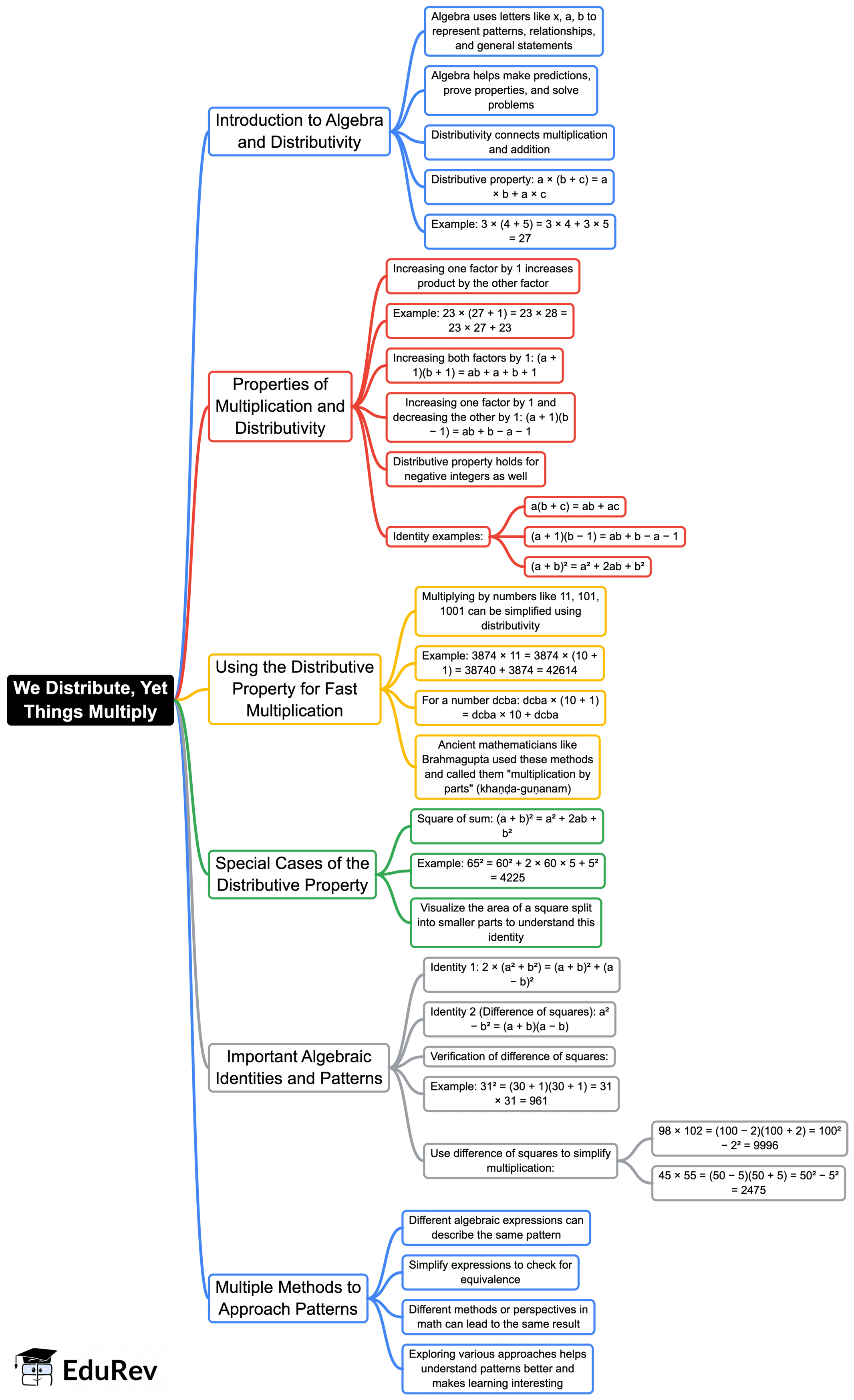Class 8 Exam > Class 8 Notes > Mathematics Class 8- New NCERT (Ganita Prakash) > Mind Map: We Distribute, Yet Things Multiply
Mind Map: We Distribute, Yet Things Multiply | Mathematics Class 8- New NCERT (Ganita Prakash) PDF Download

The document Mind Map: We Distribute, Yet Things Multiply | Mathematics Class 8- New NCERT (Ganita Prakash) is a part of the Class 8 Course Mathematics Class 8- New NCERT (Ganita Prakash).
All you need of Class 8 at this link: Class 8
|
26 videos|133 docs|11 tests
|
FAQs on Mind Map: We Distribute, Yet Things Multiply - Mathematics Class 8- New NCERT (Ganita Prakash)
| 1. What does it mean when we say "We Distribute, Yet Things Multiply"? |  |
Ans. The phrase "We Distribute, Yet Things Multiply" suggests that when resources, knowledge, or opportunities are shared among people, the overall benefits can increase significantly. This concept relates to the idea that collaboration and sharing can lead to greater innovation and productivity, allowing individuals to achieve more together than they could alone.
| 2. How can distribution lead to multiplication in real-life scenarios? |  |
Ans. In real-life scenarios, distribution can lead to multiplication through collaborative efforts. For example, in agriculture, sharing farming techniques and resources among farmers can lead to increased crop yields. Similarly, in technology, open-source software allows many developers to contribute, resulting in software that is more robust and widely used.
| 3. Can you explain the importance of sharing knowledge in educational settings? |  |
Ans. Sharing knowledge in educational settings is crucial as it promotes a collaborative learning environment. When students share ideas and resources, they enhance their understanding and spark creativity. This collaborative approach allows for a richer educational experience and can lead to improved academic outcomes for all students involved.
| 4. What role does teamwork play in achieving collective goals? |  |
Ans. Teamwork plays a vital role in achieving collective goals as it brings together diverse skills and perspectives. When individuals work collaboratively, they can leverage each other’s strengths, address weaknesses, and generate innovative solutions. This synergy often results in more effective problem-solving and a greater likelihood of success in reaching shared objectives.
| 5. How can the concept of distribution and multiplication apply to environmental sustainability? |  |
Ans. The concept of distribution and multiplication applies to environmental sustainability by emphasizing the importance of sharing resources and practices that promote conservation. For instance, when communities collaborate on recycling efforts or sustainable farming practices, they can significantly reduce waste and environmental impact. This collective action not only benefits the environment but also encourages a culture of sustainability among individuals and organizations.
Related Searches
















